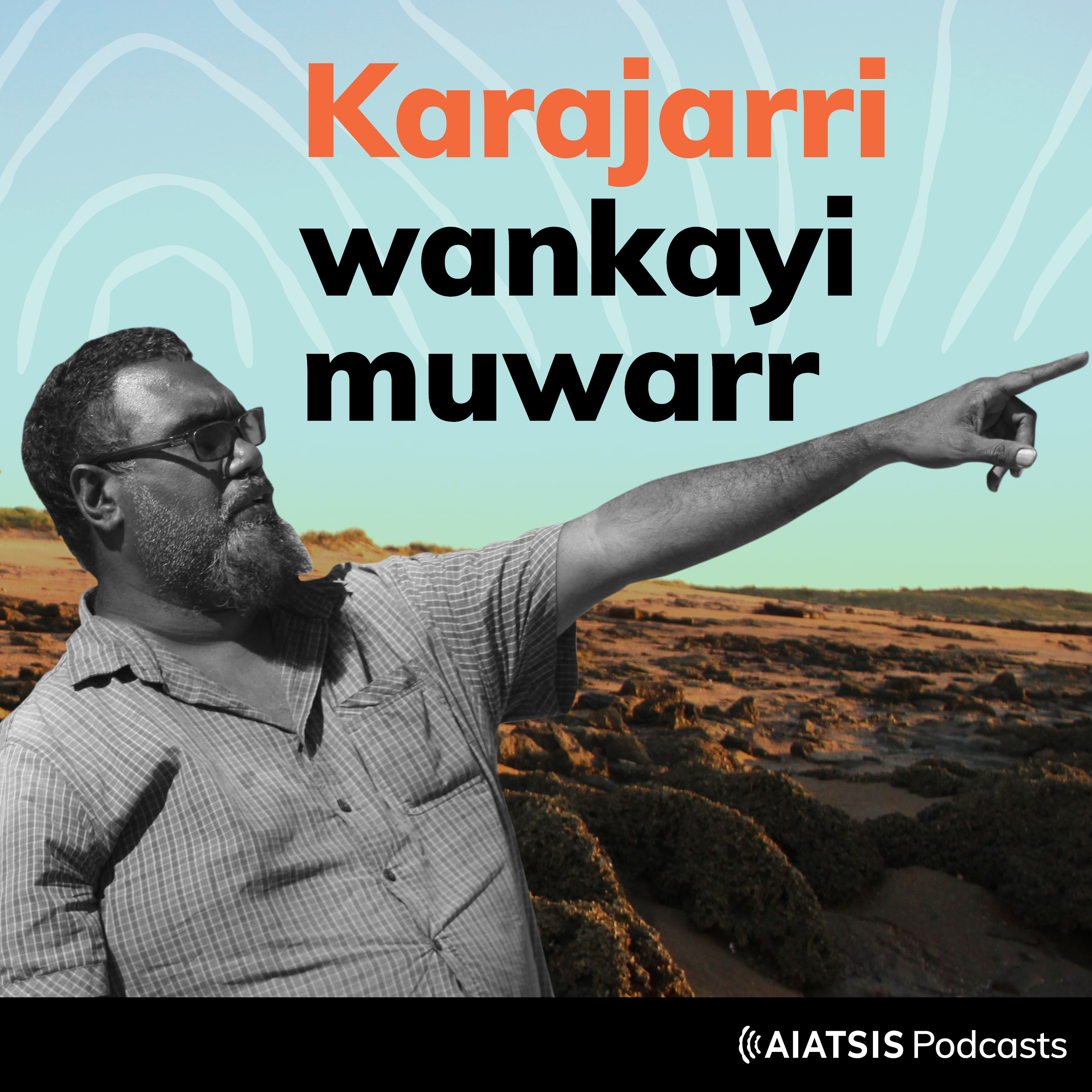The AIATSIS podcast series Karajarri wankay muwarr (‘keeping Karajarri language and stories alive’) is a story about resilience and cultural resurgence. Over four parts we hear from representatives of the Karajarri people of the Kimberley region in Western Australia while they access cultural materials in the AIATSIS Collection and reconnect with that history.
Karajarri Elder Mervyn Mulardy and his grandson Wynston Shovellor tell the story of the Karajarri people – now centred on the community at Bidyadanga in Western Australia’s Kimberley region but with traditional lands and waters that stretch over several hundred kilometres.
From the 19th century onwards settler activity on Karajarri land, including the forced relocation of other language groups to the area around what became the La Grange mission, disrupted traditional cultural links.
‘The impact on Karajarri culture, not only from the mission but affected by our old people passing away, it was very hard for us mob to continue our ceremonial practices,’ Mervyn explains in episode 1. ‘Because other tribes with bigger population and their cultural activities dominated, a lot of Karajarri people went into Broome or elsewhere.’
In the 1990s the Karajarri people faced a long journey to have their native title recognised. However, recognition brought its own challenges – caring for Country and rebuilding cultural knowledge. As they set about the latter task, they were surprised to discover AIATSIS holds extensive collection of photographic and cultural material from Karajarri elders.
‘We’ve worked in AIATSIS when we went through some of the archives,’ Wynston says in episode 2. ‘We looked at photos and audio recordings. And having AIATSIS come to Karajarri Country to record new materials was really important to shape Karajarri knowledge so we can archive our own database.’
Across the series we hear excerpts from many of the recordings held by AIATSIS. While the emotions these elicit in Mervyn as he listens to them are not straightforward, he is ultimately glad that the recordings exist because they have been instrumental for this cultural revitalisation project.
‘It took me two years to learn over 60 songs,’ Mervyn says of his experience of using the AIATSIS archives. ‘And it’s time consuming when you are listening and winding it back and listening and winding back.’
Those archives have proven invaluable in closing a 40-year gap between the oldest and youngest practitioners of Karajarri culture, and they have helped with the cultural revitalisation and strengthening that is underway for the Karajarri community.
In a later episode in the series, Mervyn describes his process for learning from old songs and bringing them back into usage.
‘AIATSIS has been very valuable for us because a lot of recording from the mission days, a lot of recording of old people from long time ago in the 60s, 50s, and those information are very valuable today for Karajarri people,’ he says. ‘It’s my job to sit down with headphones and listening to the tune of the songs because you have to sing in the right tongue.’
As a result of this experience, the Karajarri community is now establishing a cultural arm of the Karajarri Traditional Lands Association to ensure that all of the organisation’s other activities are driven and supported by culture, which remains central to the aspirations of the Karajarri people.
The podcast series Karajarri wankay muwarr (‘keeping Karajarri language and stories alive’) is part of the AIATSIS research project Preserve, Strengthen and Renew in community.
Find the series on your favourite podcasting platform or listen on the AIATSIS website.
